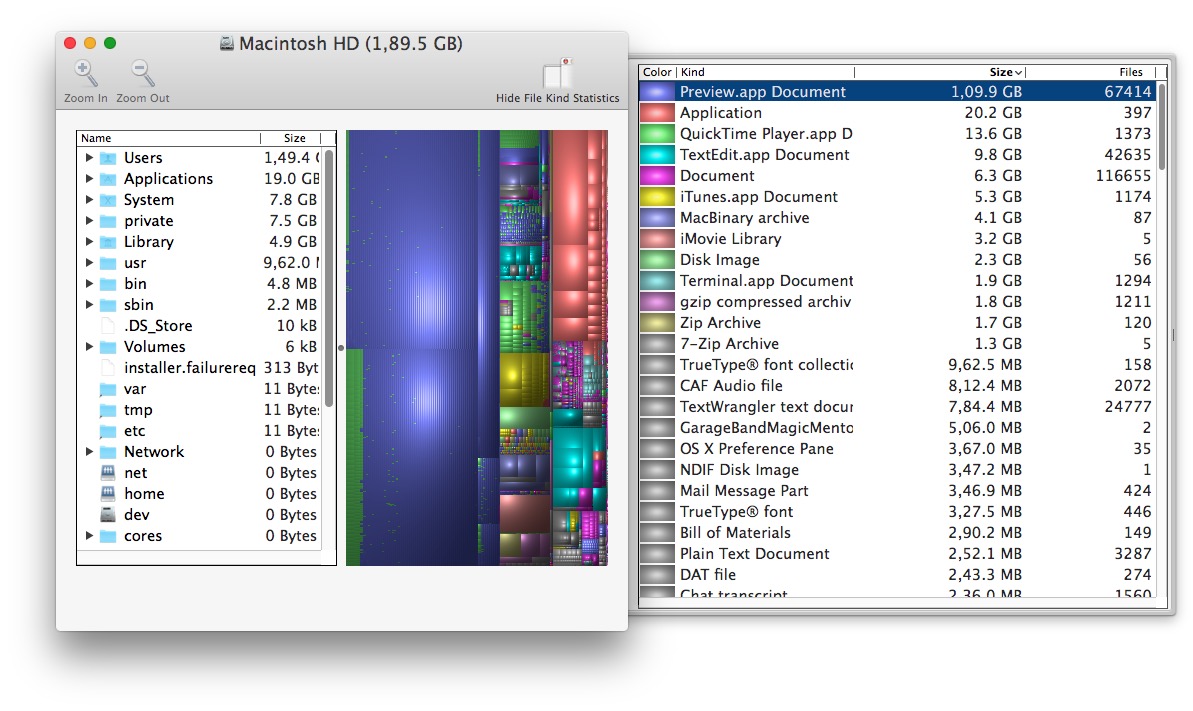Have you noticed your hard drive has been slowly filling up? If you’ve had your machine for a while, a lot of extra “stuff” can build up over time. Whether it’s temporary files from your browser, old music files in your iTunes library, or something else, it can be tricky to hunt down and delete junk files.

Fortunately, this is help for your bogged-down drive. WinDirStat, one of the least appealingly named pieces of freeware out there, is also one of the most useful. The program rapidly indexes your entire hard drive, creates a visual map of every file, and helps you delete the stuff you don’t need.
In the partition pie chart, select the pie slice that is immediately after the Stuff volume. This pie slice will be the More Stuff volume you used as the source in the previous step. With the slice selected, click the minus button below the pie chart.

Once you start up WinDirStat and select the drive you want to search (you can also select “all drives”), the indexing process begins. Depending on how large your drive is and how much data you have, this CAN be a lengthy process, but compared to some other indexing programs, WinDirStat does a remarkably efficient job. The folders are then organize in a standard drill-down interface. Each one has an indicator of how large it is and how much of its parent (or “higher level”) folder it takes up. This interface alone is enough to make the software worth the download.
Beyond the complex file manager, the most noticeable feature of WinDirStat is their visualization system. Check out my “C” drive’s image below:
You’ll immediately notice there are a number of colors and most of the blocks are different sizes. This is because WinDirStat marks every type of file (determined by file extension) with a unique color. The larger the file, the larger the block. Also, each visible section is part of the same folder. The column on the right, for instance, is the system folder and contains two giant, blue pagefiles (one is the regular pagefile and the other is the hibernation file).
Navigating around the image is fairly intuitive once you understand how it’s laid out. Left clicking snaps the file manager to the file or folder in question. Right clicking on any section brings up a contextual menu including the ability to zoom in as well as the ability to select the parent folder.
At the top of the screen there are several toolbar options:
From left to right they are:
- Open – for selecting a drive to index
- Refresh – this can repopulate the map with new changes
- Open Item – opens the selected item
- Copy Path – a very useful tool to copy the path (address within the computer) of a file or folder
- Explorer – opens the selection in Windows Explorer
- Command Prompt – opens a command prompt window (pretty handy)
- Refresh Selected – repopulates the map of the selection with any new changes
- Delete to Recycle Bin – equivalent to hitting the delete key in Windows Explorer
- Delete (instant) – immediately deletes the selection, bypassing the Recycle Bin
- Properties – Shows the properties of the selection
- Zoom In/Out – Enables zooming around the graphic interface (this will highlight the enlarged area in the file manager
- Help – opens WinDirStat help

There are more options in WinDirStat, but these particular ones are those that I have found most useful in cleaning out undesirable files. One thing to keep in mind is that while WinDirStat may allow you to access any file on your computer, be careful what you delete. Some of the files will be large and have names you are not familiar with. Deleting them directly might cause irreparable damage to your PC. I suggest Googling anything you aren’t sure about before you delete it.
Pie Chart For Author's Purpose
If you’ve used WinDirStat, what are some things you use it for? Personally, I use it to quickly navigate my iTunes library because old podcasts sometimes get hung up in the labyrinthic file system it uses.